-
 Bitcoin
Bitcoin $106,754.6083
1.33% -
 Ethereum
Ethereum $2,625.8249
3.80% -
 Tether USDt
Tether USDt $1.0001
-0.03% -
 XRP
XRP $2.1891
1.67% -
 BNB
BNB $654.5220
0.66% -
 Solana
Solana $156.9428
7.28% -
 USDC
USDC $0.9998
0.00% -
 Dogecoin
Dogecoin $0.1780
1.14% -
 TRON
TRON $0.2706
-0.16% -
 Cardano
Cardano $0.6470
2.77% -
 Hyperliquid
Hyperliquid $44.6467
10.24% -
 Sui
Sui $3.1128
3.86% -
 Bitcoin Cash
Bitcoin Cash $455.7646
3.00% -
 Chainlink
Chainlink $13.6858
4.08% -
 UNUS SED LEO
UNUS SED LEO $9.2682
0.21% -
 Avalanche
Avalanche $19.7433
3.79% -
 Stellar
Stellar $0.2616
1.64% -
 Toncoin
Toncoin $3.0222
2.19% -
 Shiba Inu
Shiba Inu $0.0...01220
1.49% -
 Hedera
Hedera $0.1580
2.75% -
 Litecoin
Litecoin $87.4964
2.29% -
 Polkadot
Polkadot $3.8958
3.05% -
 Ethena USDe
Ethena USDe $1.0000
-0.04% -
 Monero
Monero $317.2263
0.26% -
 Bitget Token
Bitget Token $4.5985
1.68% -
 Dai
Dai $0.9999
0.00% -
 Pepe
Pepe $0.0...01140
2.44% -
 Uniswap
Uniswap $7.6065
5.29% -
 Pi
Pi $0.6042
-2.00% -
 Aave
Aave $289.6343
6.02%
Is it a lure to buy more when the time-sharing chart suddenly rises at the end of the trading day but the volume is insufficient?
A sudden price spike on the time-sharing chart, especially with low volume, may signal manipulation rather than genuine market strength.
Jun 18, 2025 at 11:15 pm
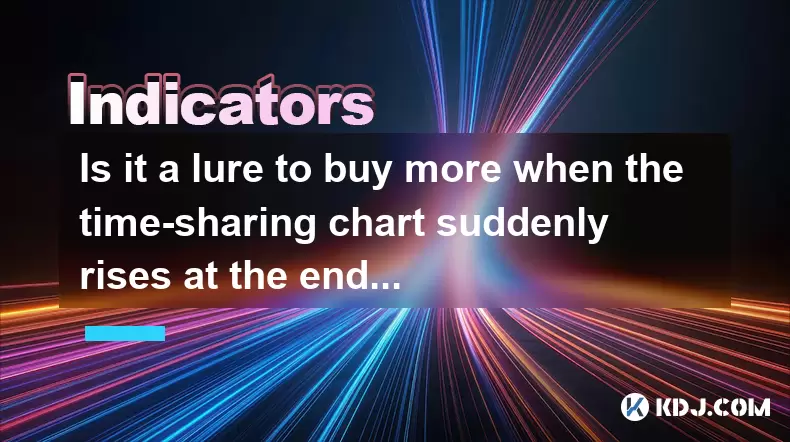
Understanding the Time-Sharing Chart and Its Implications
The time-sharing chart, also known as the intraday chart, is a crucial tool for traders to monitor price movements over short intervals. It displays how the price of a cryptocurrency fluctuates minute by minute within a single trading session. When this chart shows a sudden upward spike near the end of the trading day, it can raise questions about whether this movement is genuine or a manipulation tactic.
Traders often interpret sharp price increases as signs of strong demand. However, without corresponding volume support, such moves may not be reliable indicators of market strength. In fact, they could be part of a broader strategy used by large players to entice retail investors into buying at higher levels.
Time-sharing charts are especially useful in volatile markets like cryptocurrency because they allow traders to spot patterns that might not be visible on daily or weekly charts.
What Does a Sudden Rise with Low Volume Mean?
A sudden rise in price accompanied by low trading volume suggests that the rally lacks conviction from institutional or large-volume participants. This kind of move can often be attributed to wash trading, spoofing, or other forms of market manipulation.
In many cases, smaller orders placed strategically can push the price up temporarily without significant capital outlay. These actions may create an illusion of momentum, encouraging others to jump in before the artificial uptick collapses.
- Low volume indicates lack of real interest — A surge without supporting volume usually means few actual buyers are involved.
- Potential for fake breakouts — False breakouts occur when the price briefly surpasses a key level only to reverse shortly afterward.
- Manipulation risks increase — Traders should be cautious if the move happens during low-liquidity periods, especially toward the close of a trading session.
Identifying Lure Patterns in Cryptocurrency Trading
One common manipulation pattern involves creating a false sense of optimism through a last-minute price pump. This behavior is more prevalent in thinly traded altcoins or newer tokens where liquidity is sparse.
To identify such patterns:
- Analyze order book depth — Look for unusual spikes in bid-ask sizes that disappear quickly.
- Compare volume across exchanges — If the same coin shows inconsistent volume behavior on different platforms, it could signal manipulation.
- Watch for rapid retracements — If the price rises sharply but then falls back just as fast, it’s likely a trap set to lure in new buyers.
It's important to remember that while these tactics may seem sophisticated, they often leave behind digital footprints that experienced traders can detect with the right tools.
How to Protect Yourself from Fake Upticks
Avoiding the trap of fake rallies requires both technical analysis skills and emotional discipline. Here are some practical steps you can take:
- Use volume filters — Set your charting software to highlight abnormal volume changes so you can easily distinguish real moves from fake ones.
- Wait for confirmation — Don’t rush into a trade based solely on late-day action. Wait until the next session to see if the trend holds.
- Implement stop-loss orders — Even if you do enter a position, having a stop-loss ensures you don't lose too much if the move turns out to be artificial.
Also, avoid making trades based purely on sentiment or social media hype. Always cross-reference price action with volume and other technical indicators.
Real vs. Artificial Price Movements
Distinguishing between authentic and artificial price movements is essential for any trader operating in the crypto space. Real rallies tend to come with increasing volume, sustained momentum, and often coincide with positive news or developments.
Conversely, artificial movements typically exhibit:
- No fundamental catalyst — There’s no underlying news or event driving the move.
- High volatility without follow-through — The price jumps but fails to maintain levels or build upon gains.
- Abnormal order flow — Large orders appear and vanish rapidly, suggesting spoofing activity.
By carefully observing these characteristics, traders can better protect themselves against manipulative tactics designed to trigger impulsive buying decisions.
Frequently Asked Questions (FAQ)
Q: Can I trust a price spike that happens minutes before the daily candle closes?
A: Not necessarily. Such spikes often lack volume and can be the result of manipulation. Always verify with other indicators and wait for confirmation in the next trading session.
Q: How do I differentiate between a real breakout and a fake one on the time-sharing chart?
A: A real breakout will show consistent volume, strong follow-through, and alignment with broader market trends. Fake breakouts usually lack these elements and reverse quickly.
Q: Are certain cryptocurrencies more prone to this kind of manipulation?
A: Yes, especially those with low trading volumes, limited exchange listings, and minimal institutional presence. Larger-cap assets like Bitcoin or Ethereum are less susceptible due to their deep liquidity.
Q: Should I completely avoid trading during the last hour of the day?
A: Not necessarily, but you should exercise caution. Use additional filters like volume profiles and order book analysis before entering trades during volatile closing periods.
Disclaimer:info@kdj.com
The information provided is not trading advice. kdj.com does not assume any responsibility for any investments made based on the information provided in this article. Cryptocurrencies are highly volatile and it is highly recommended that you invest with caution after thorough research!
If you believe that the content used on this website infringes your copyright, please contact us immediately (info@kdj.com) and we will delete it promptly.
- Parataxis Holdings & Bridge Biotherapeutics: A Bitcoin Treasury Play in South Korea
- 2025-06-20 20:25:12
- Pi Network Price Prediction: Navigating June 2025's Uncertainties
- 2025-06-20 20:25:12
- AI Chip Maker Cerebras Hacked: Crypto Scam Alert!
- 2025-06-20 20:45:13
- dYdX Surge Program: Leveling Up DeFi Trading with Incentives
- 2025-06-20 20:45:13
- Bitcoin Breakout Watch: Can BTC Surge to $100K and Beyond?
- 2025-06-20 20:50:12
- Coinsilium, Bitcoin Treasury, Forza!: Riding the Crypto Wave in 2025
- 2025-06-20 20:50:12
Related knowledge

Is the golden cross of the ROC indicator below the zero axis effective?
Jun 20,2025 at 09:42pm
Understanding the ROC Indicator and Its Role in Cryptocurrency TradingThe Rate of Change (ROC) indicator is a momentum oscillator widely used by traders to assess the speed at which cryptocurrency prices are changing. It measures the percentage difference between the current price and the price from a certain number of periods ago. The ROC helps identif...
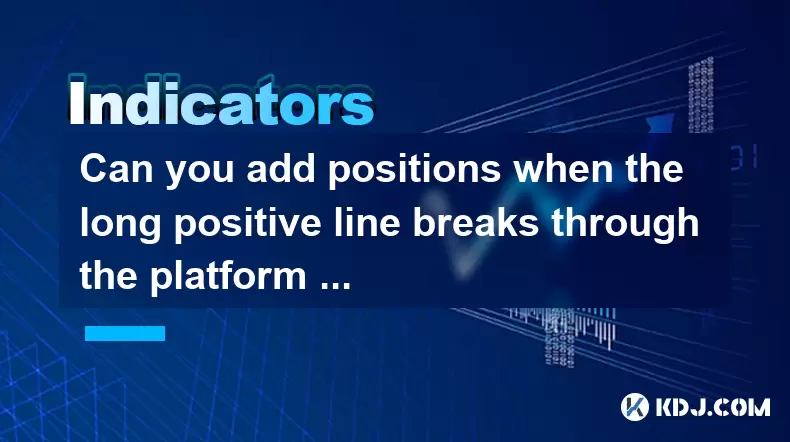
Can you add positions when the long positive line breaks through the platform and then shrinks and falls back?
Jun 20,2025 at 08:57pm
Understanding the Price Pattern: Breakthrough, Retract, and ConsolidationIn cryptocurrency trading, one of the commonly observed patterns involves a long positive line breaking through a consolidation platform, followed by a retraction or pullback. This scenario often raises questions among traders about whether to add positions after such a move. The p...
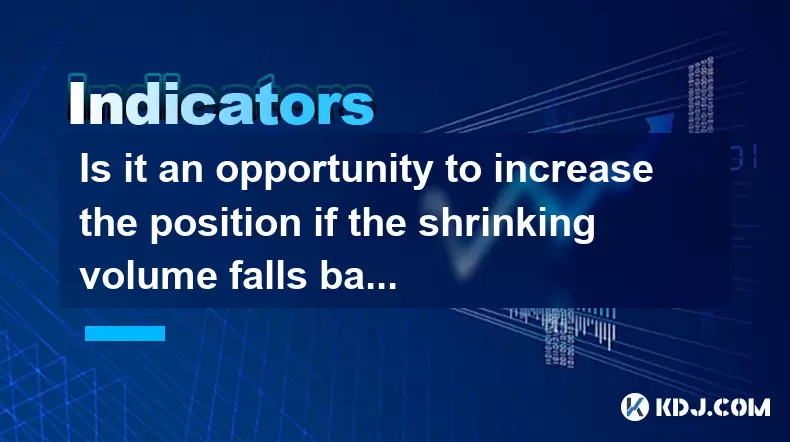
Is it an opportunity to increase the position if the shrinking volume falls back to the rising trend line?
Jun 20,2025 at 06:22pm
Understanding the Shrinking Volume in Cryptocurrency TradingIn cryptocurrency trading, volume is one of the most critical indicators used to confirm price movements and trends. When traders observe a scenario where volume shrinks during a pullback, it can signal either a lack of selling pressure or an imminent reversal. This phenomenon often occurs when...
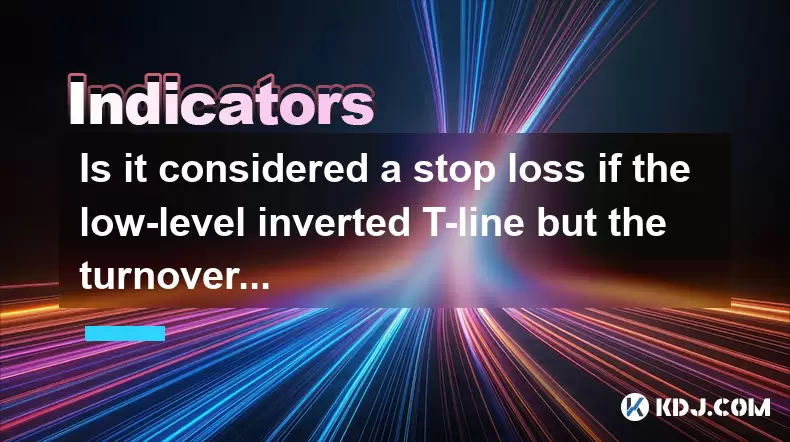
Is it considered a stop loss if the low-level inverted T-line but the turnover rate is extremely low?
Jun 20,2025 at 04:49pm
Understanding the Low-Level Inverted T-Line in Cryptocurrency ChartsIn technical analysis within the cryptocurrency market, candlestick patterns are crucial indicators for traders to predict potential price movements. The low-level inverted T-line is a specific type of candlestick pattern that often raises questions among traders. This pattern typically...
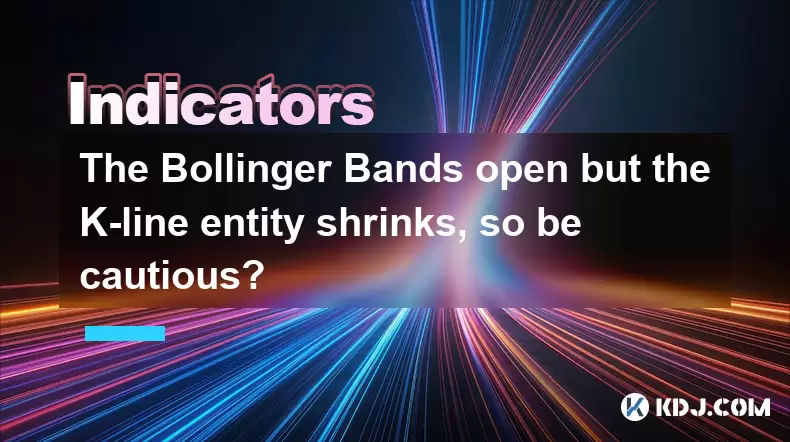
The Bollinger Bands open but the K-line entity shrinks, so be cautious?
Jun 20,2025 at 06:08pm
Understanding the Bollinger Bands and K-Line RelationshipBollinger Bands are a popular technical analysis tool used in cryptocurrency trading. They consist of a moving average (usually 20-period) with two standard deviation lines plotted above and below it. These bands dynamically adjust to price volatility, expanding when volatility increases and contr...
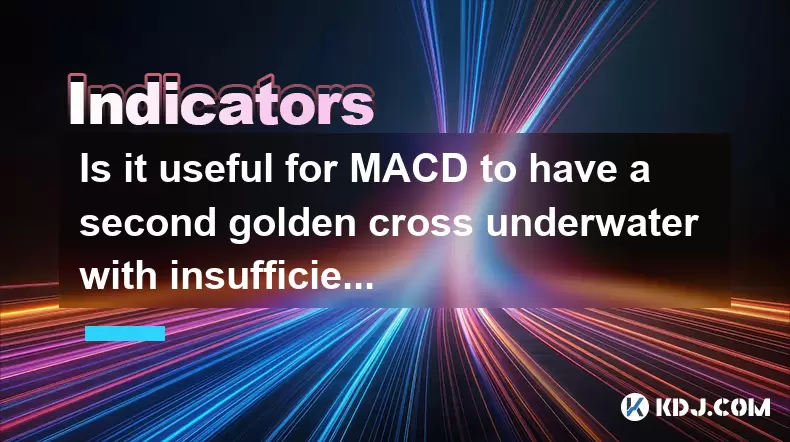
Is it useful for MACD to have a second golden cross underwater with insufficient volume?
Jun 20,2025 at 06:49pm
Understanding the MACD and Its Golden CrossThe Moving Average Convergence Divergence (MACD) is a popular technical analysis tool used by traders to identify potential buy or sell signals. It consists of three components: the MACD line, the signal line, and the histogram. The golden cross occurs when the MACD line crosses above the signal line, often see...

Is the golden cross of the ROC indicator below the zero axis effective?
Jun 20,2025 at 09:42pm
Understanding the ROC Indicator and Its Role in Cryptocurrency TradingThe Rate of Change (ROC) indicator is a momentum oscillator widely used by traders to assess the speed at which cryptocurrency prices are changing. It measures the percentage difference between the current price and the price from a certain number of periods ago. The ROC helps identif...

Can you add positions when the long positive line breaks through the platform and then shrinks and falls back?
Jun 20,2025 at 08:57pm
Understanding the Price Pattern: Breakthrough, Retract, and ConsolidationIn cryptocurrency trading, one of the commonly observed patterns involves a long positive line breaking through a consolidation platform, followed by a retraction or pullback. This scenario often raises questions among traders about whether to add positions after such a move. The p...

Is it an opportunity to increase the position if the shrinking volume falls back to the rising trend line?
Jun 20,2025 at 06:22pm
Understanding the Shrinking Volume in Cryptocurrency TradingIn cryptocurrency trading, volume is one of the most critical indicators used to confirm price movements and trends. When traders observe a scenario where volume shrinks during a pullback, it can signal either a lack of selling pressure or an imminent reversal. This phenomenon often occurs when...

Is it considered a stop loss if the low-level inverted T-line but the turnover rate is extremely low?
Jun 20,2025 at 04:49pm
Understanding the Low-Level Inverted T-Line in Cryptocurrency ChartsIn technical analysis within the cryptocurrency market, candlestick patterns are crucial indicators for traders to predict potential price movements. The low-level inverted T-line is a specific type of candlestick pattern that often raises questions among traders. This pattern typically...

The Bollinger Bands open but the K-line entity shrinks, so be cautious?
Jun 20,2025 at 06:08pm
Understanding the Bollinger Bands and K-Line RelationshipBollinger Bands are a popular technical analysis tool used in cryptocurrency trading. They consist of a moving average (usually 20-period) with two standard deviation lines plotted above and below it. These bands dynamically adjust to price volatility, expanding when volatility increases and contr...

Is it useful for MACD to have a second golden cross underwater with insufficient volume?
Jun 20,2025 at 06:49pm
Understanding the MACD and Its Golden CrossThe Moving Average Convergence Divergence (MACD) is a popular technical analysis tool used by traders to identify potential buy or sell signals. It consists of three components: the MACD line, the signal line, and the histogram. The golden cross occurs when the MACD line crosses above the signal line, often see...
See all articles

























































































